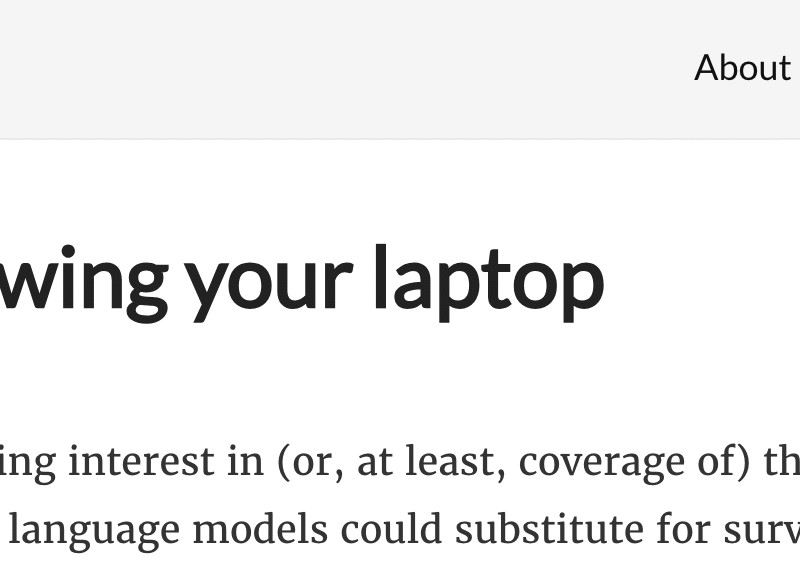Image by Author | Canva
The data science job market is crowded. Employers and recruiters are sometimes real a-holes who ghost you just when you thought you’d start negotiating your salary.
As if fighting your competition, recruiters, and employers is not enough, you also have to fight yourself. Sometimes, the lack of success at interviews really is on data scientists. Making mistakes is acceptable. Not learning from them is anything but!
So, let’s dissect some common mistakes and see how not to make them when applying for a data science job.

1. Treating All Roles the Same
Mistake: Sending the same resume and cover letter to each role you apply for, from research-heavy and client-facing positions, to being a cook or a Timothée Chalamet lookalike.
Why it hurts: Because you want the job, not the “Best Overall Candidate For All the Positions We’re Not Hiring For” award. Companies want you to fit into the particular job.
A role at a software startup might prioritize product analytics, while an insurance company is hiring for modeling in R.
Not tailoring your CV and cover letter to present yourself as highly suitable for a position carries a risk of being overlooked even before the interview.
A fix:
- Read the job description carefully.
- Tailor your CV and cover letter to the mentioned job requirements – skills, tools, and tasks.
- Don’t just list skills, but show your experience with relevant applications of those skills.
2. Too Generic Data Projects
Mistake: Submitting a data project portfolio brimming with washed-out projects like Titanic, Iris datasets, MNIST, or house price prediction.
Why it hurts: Because recruiters will fall asleep when they read your application. They’ve seen the same portfolios thousands of times. They’ll ignore you, as this portfolio only shows your lack of business thinking and creativity.
A fix:
- Work with messy, real-world data. Source the projects and data from sites such as StrataScratch, Kaggle, DataSF, DataHub by NYC Open Data, Awesome Public Datasets, etc.
- Work on less common projects
- Choose projects that show your passions and solve practical business problems, ideally those that your employer might have.
- Explain tradeoffs and why your approach makes sense in a business context.
3. Underestimating SQL
Mistake: Not practicing SQL enough, because “it’s easy compared to Python or machine learning”.
Why it hurts: Because knowing Python and how to avoid overfitting doesn’t make you an SQL expert. Oh, yeah, SQL is also heavily tested, especially for analyst and mid-level data science roles. Interviews often focus more on SQL than Python.
A fix:
- Practice complex SQL concepts: subqueries, CTEs, window functions, time series joins, pivoting, and recursive queries.
- Use platforms like StrataScratch and LeetCode to practice real-world SQL interview questions.
4. Ignoring Product Thinking
Mistake: Focusing on model metrics instead of business value.
Why it hurts: Because a model that predicts customer churn with 94% ROC-AUC, but mostly flags customers who don’t use the product anymore, has no business value. You can’t retain customers that are already gone. Your skills don’t exist in a vacuum; employers want you to use those skills to deliver value.
A fix:
5. Ignoring MLOps
Mistake: Focusing only on building a model while ignoring its deployment, monitoring, fine-tuning, and how it runs in production.
Why it hurts: Because you can stick your model you-know-where if it’s not usable in production. Most employers won’t consider you a serious candidate if you don’t know how your model gets deployed, retrained, or monitored. You won’t necessarily do all that by yourself. But you’ll have to show some knowledge, as you’ll work with machine learning engineers to make sure your model actually works.
A fix:
- Understand the three main ways of data processing: batch, real-time, and hybrid processing.
- Understand machine learning pipelines, CI/CD, and machine learning model monitoring.
- Practice workflow design in your projects by including data ingestion, model training, versioning, and serving.
- Get familiar with machine learning orchestration tools, such as Prefect and Airflow (for orchestration), Kubeflow and ZenML (for pipeline abstraction), and MLflow and Weights & Biases (for tracking).
6. Being Unprepared for Behavioral Interview Questions
Mistake: Brushing off questions like “Tell me about a challenge you faced” as non-important and not preparing for them.
Why it hurts: These questions are not a part of the interview (only) because the interviewer is bored to death with her family life, so she’d rather sit there with you in a stuffy office asking stupid questions. Behavioral questions test how you think and communicate.
A fix:
7. Using Buzzwords Without Context
Mistake: Packing your CV with technical and business buzzwords, but no concrete examples.
Why it hurts: Because “Leveraged cutting-edge big data synergies to streamline scalable data-driven AI solution for end-to-end generative intelligence in the cloud” doesn’t really mean anything. You might accidentally impress someone with that. (But don’t count on that.) More often, you’ll be asked to explain what you mean by that and risk admitting you’ve no idea what you’re talking about.
Fix it:
- Avoid using buzzwords and communicate clearly.
- Know what you’re talking about. If you can’t avoid using buzzwords, then for every buzzword, include a sentence that shows how you used it and why.
- Don’t be vague. Instead of saying “I have experience with DL”, say “I used long short-term memory to forecast product demand and reduced stockouts by 24%”.
Conclusion
Avoiding these seven mistakes is not difficult. Making them can be costly, so don’t make them. The recruitment process in data science is complicated and gruesome enough. Try not to make your life even more complicated by succumbing to the same stupid mistakes as other data scientists.
Nate Rosidi is a data scientist and in product strategy. He’s also an adjunct professor teaching analytics, and is the founder of StrataScratch, a platform helping data scientists prepare for their interviews with real interview questions from top companies. Nate writes on the latest trends in the career market, gives interview advice, shares data science projects, and covers everything SQL.

